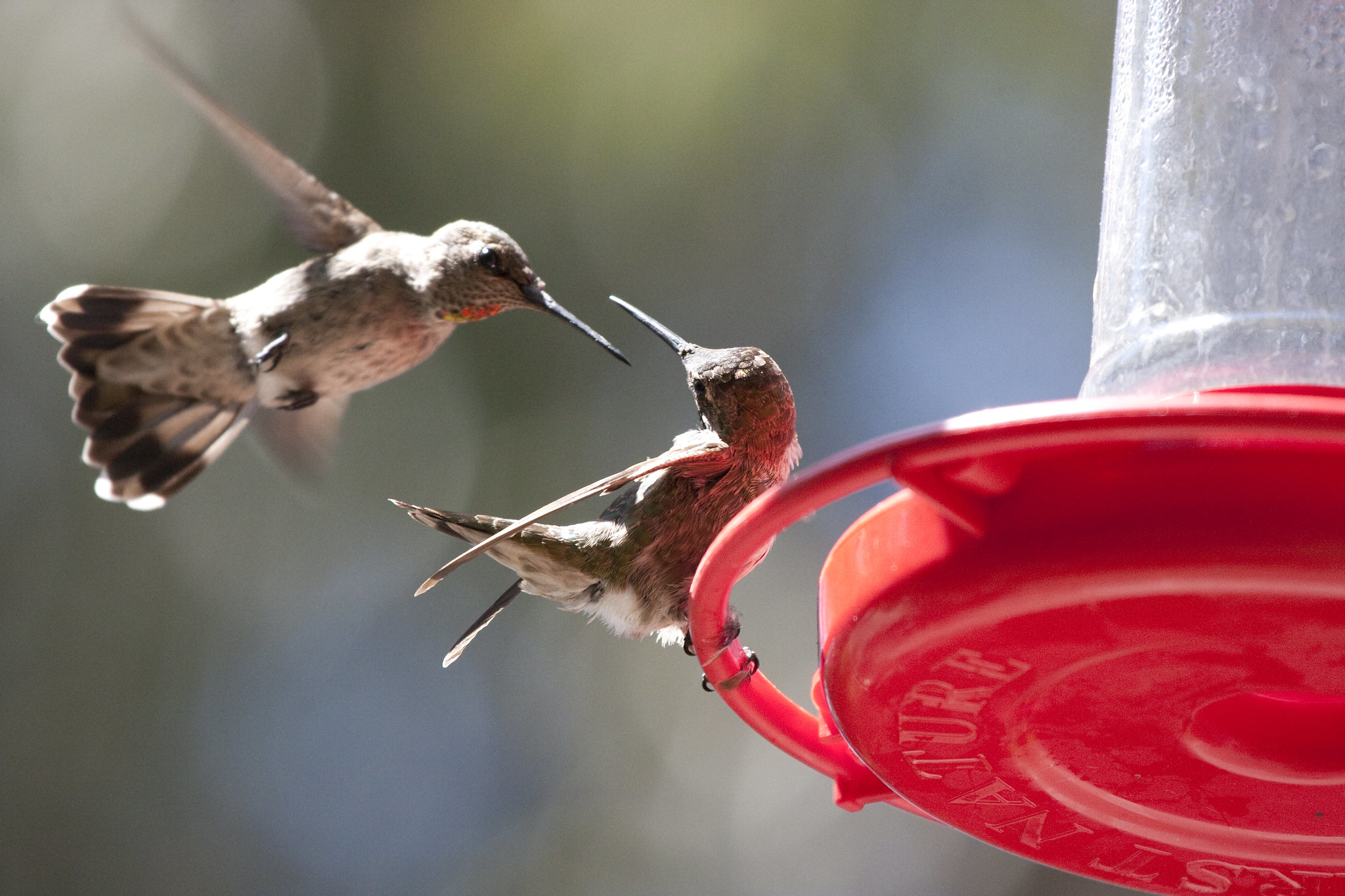What a joy it is to watch hummingbirds flit from here to there! And if you have a hummingbird feeder, you know this joy all too well. But sometimes when there’s more than one at your feeder, it can get ugly. Why are hummingbirds fighting at your feeder, and (more importantly) what do you do about it? Have no fear—we’ve got answers for you!
Why Do Hummingbirds Sometimes Fight at Feeders?
The long and the short of it is, hummingbirds are territorial creatures. When a hummingbird finds your feeder and starts to drink the sweet nectar, they know they’ve found a precious resource. Hummingbirds burn between 6,000 and 12,000 calories per day and consume half their body weight in sugar during that time. They also must refuel around 10 times a day to keep up with those energy needs. Add to this, many hummingbirds are just coming from a long migration at this time of year, so they’re looking to replenish themselves. So, finding a source of energy (in this case, your feeder) is a matter of life or death to them, and they will act to protect that resource from other hummingbirds.
How Can You Tell When Hummingbirds are Fighting?
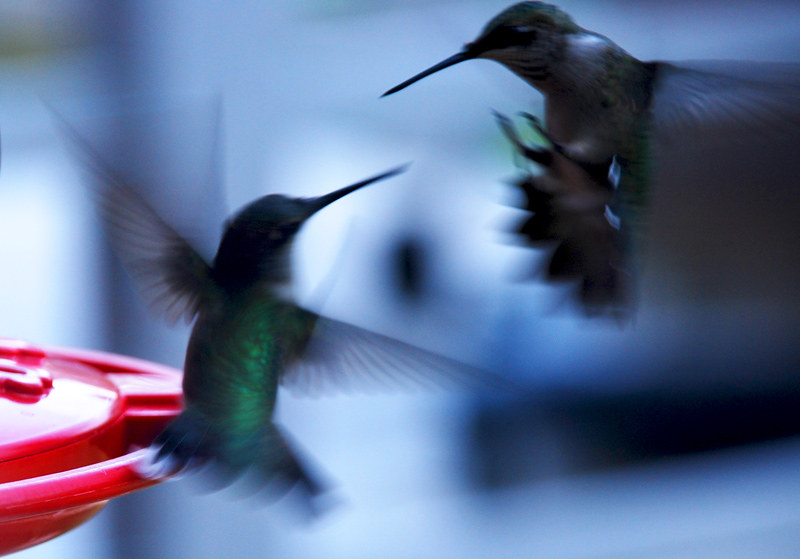
A fighting hummingbird will display certain types of body language and behavior. You might see them puff up to make themselves look larger or flash their colorful throat (called a gorget). Hummingbirds may charge or chase each other, trying to run one another off from the area. They may also dive at each other, make loud chirping sounds, and sometimes even attack each other using their bills and talons.
How to Stop Hummingbirds from Fighting at Your Feeder
Add more hummingbird feeders
Watch this live hummingbird cam, featuring a cluster of hummingbird feeders:
When you hang multiple hummingbird feeders in your yard or outdoor space, you’re giving the hummers more places to feed and less reason to fight. With more nectar available, there’s no more need for competition at one, lone feeder. And if you have a particularly aggressive hummingbird seeking to dominate all or part of your yard, you make it harder for them to police all of the hummingbirds feeding on multiple feeders. When shopping for a new hummingbird feeder, look for one with multiple feeding ports that are spaced away from each other, further decreasing the chance of a fight.
Hang feeders far away from each other
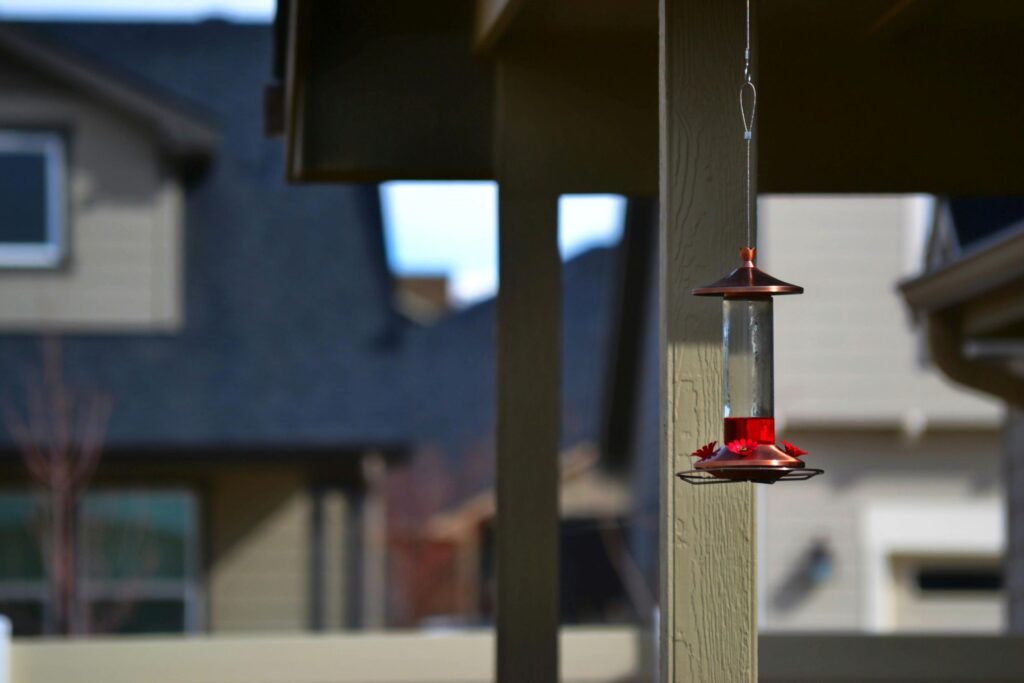
While, yes, you can hang multiple hummingbird feeders in a cluster to minimize fighting, hanging them far away from each other works well too. Often, all you need to do is add more feeders in the same area, and the fighting hummingbirds will have no more need to fight, leading them to feed side by side and in peace. However, there are times when a particularly territorial hummingbird will try to dominate a feeder or feeders, chasing other hummers off and being aggressive and sometimes violent. In these cases in particular, it’s best to hang multiple hummingbird feeders about 15-20 feet or more away from each other. Some bird experts even suggest placing the feeders out of sight of each other (for example, hanging one in the front yard, and one in the backyard) so the bully bird can’t try to dominate all your feeders.
Plant a hummingbird garden
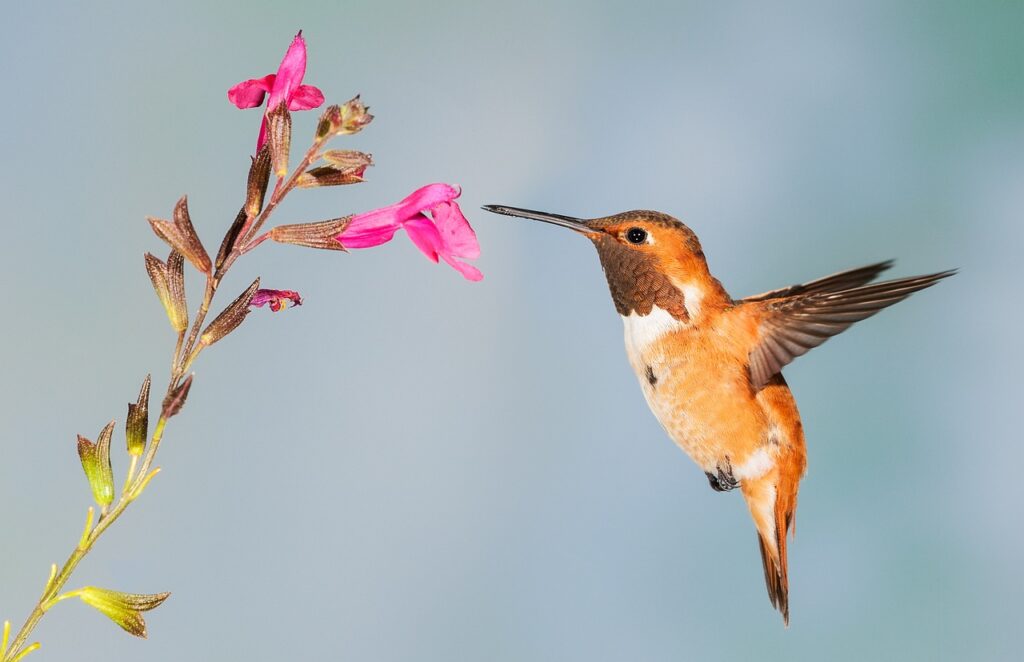
What better way to give hummingbirds more access to the energy they so desperately need than to plant a hummingbird garden? Not only will your local hummers love feeding off their favorite flowers, such as petunias and fuchsia, but you’ll get to enjoy the dazzlingly bright colors of these flowers all spring. Pick colorful flowers (red and orange are hummingbird favorites) that produce nectar, like California poppies, larkspur, salvia, evening primrose, trumpet vines, and zinnia. If you don’t have space for a garden, plant them in containers—you can also use hanging planters to attract hummingbirds as they’re flying through. A hummingbird garden is also a great source for bees, since they both feed on nectar, and is an excellent way to support the declining bee populations.
More Hummingbird Feeding Tips
Place hummingbird feeders away from windows
Hummingbirds are more susceptible to window strikes, so place your feeders at least 15-20 feet away from your windows.
Fill your feeders with clear nectar or sugar water
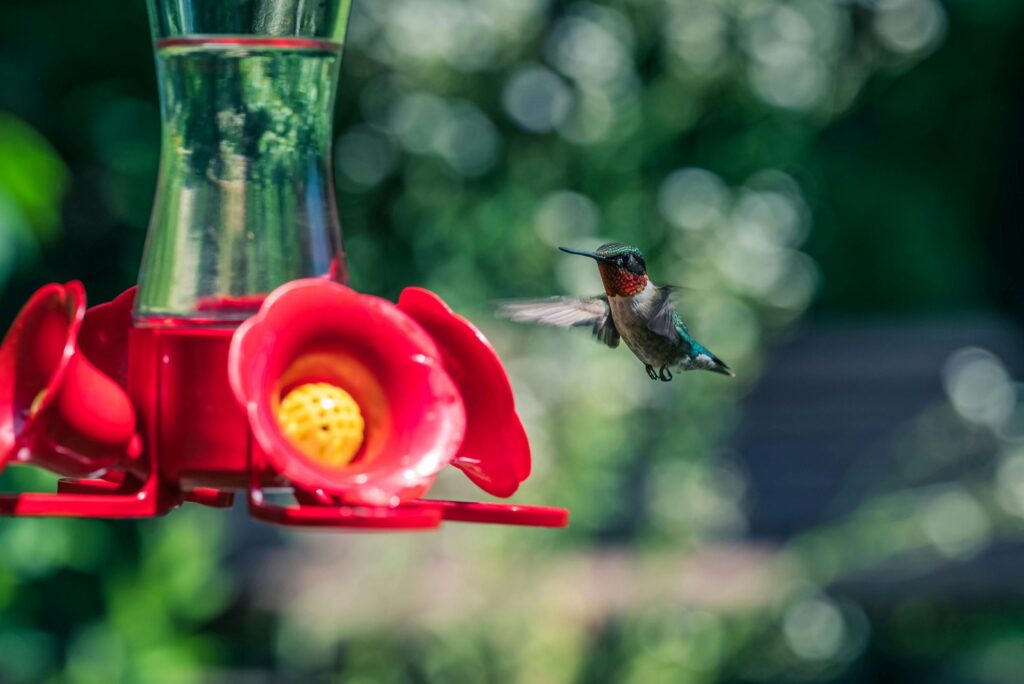
Avoid using nectar water with red dye in it, as this can be toxic to hummingbirds. Buy clear nectar or mix sugar water yourself (one part granulated sugar to four parts water).
Clean your hummingbird feeders regularly
Wash your feeder every few days (and every day on hot days) with hot water and soap to prevent mold. Rinse and dry them thoroughly before refilling them.
Add a water feature for the hummingbirds
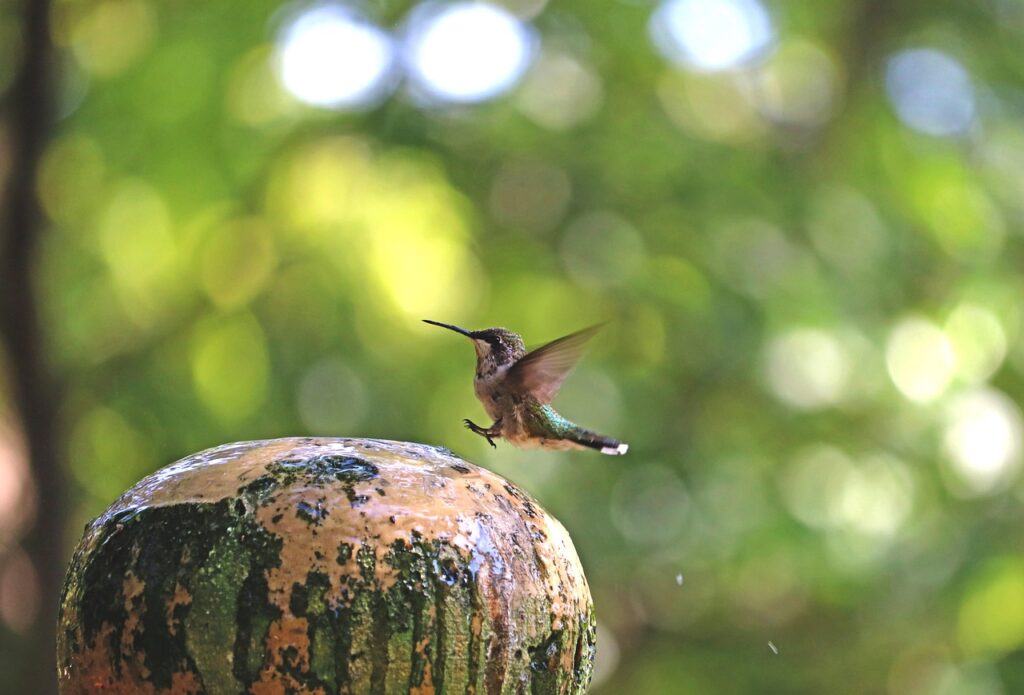
Like all birds, hummingbirds also need water to drink and bathe. Use a shallow bowl or birdbath and fill it with 1” water, max. Put a few large rocks and/or branches in the water for the hummers to perch on while they drink. Refresh the water every few days and wash the bird bath with a vinegar/water mix at least once a week to prevent bacteria growth.
Shop Hummingbird Feeders and Nectar at Chirp
We have everything you need to keep your backyard hummingbirds happy this spring. Visit the Chirp store for hummingbird feeders, nectar, birdbaths, and so much more.
Photo credits: Hummingbirds fighting at feeder courtesy of Dann Solo. Blog featured image courtesy of Nathan Rupert.

